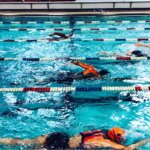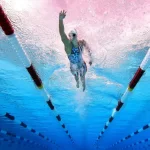No training plan is complete without a good recovery plan. Triathletes need to plan their own recovery and start on a path to make the most of their training plan. Just as training plans can be personally engineered, recovery can be too.
Timing is crucial. Your body will not be ready to do another workout if it hasn’t recovered from the last one. In between hard workouts, athletes need to make sure their body is rested to handle the stress of the next one.
Here are some of the best recovery techniques and the best practices on when and how to use them to improve the recovery process.
Post Session Recovery
Immediately after your workouts you should do (some of) the following to help you recover:
- Within an hour of your workout, replenish your body with plenty of fluids and a small amount of protein.
- Make sure your replenish 150% of all the fluids lost from your workout – be sure to include some electrolytes – within a couple hours of your workout.
- Take a nap – it’s the best way to allow your muscles to recover and allow your body to repair.
- Wash your hands. Practicing good hygiene will help you to avoid getting sick while your body’s immune system is down after those hard training sessions.
- Make sure you stretch every day to keep you muscles loose for the next training. A foam roller is a great way to loosen tight muscles.
- Three hours after a workout, take an ice bath for about 10-15 minutes to help reduce immediate soreness.
- You can also take an Epsom salt bath which helps relax tight muscles.
Therapy to Assist Recovery
Here are other ways to assist your recovery on a regular basis – whether that’s weekly or monthly:
- Visiting a chiropractor for body adjustments
- Regular body massages – this is particularly important to work out the upper back muscles used while swimming which you probably can’t reach yourself
- Acupuncture – to release the toxins in your entire body
Sometimes you need more therapy and sometimes you need less. Listen to your body. You’ll know how much you need based on how you’re performing and how you’re feeling.
Monitoring Your Recovery
You should monitor your recovery and how it’s progressing so you know whether your body is ready for training again. Here are some measures you can use to find out:
- Record and measure your heart rate first thing in the morning and over time. Look at the trends over time and notice if anything indicates fatigue or stress.
- Track whether you have made any improvements in your workouts. If not, you need to change your motivation and perhaps how much load your carrying and/or your recovery time between workouts.
Practicing good habits will allow for better recovery. Additional therapy will help speed up and improve the quality of your recovery. Take care of your body and learn to understand it physically, nutritionally, and mentally. If you need help with a training program or tips of how to make the most out of recovering from your sessions, contact me today. I can help you come up with the best plan to make the most out of your training plan. And remember you’re training to recover, not recovering to train!







